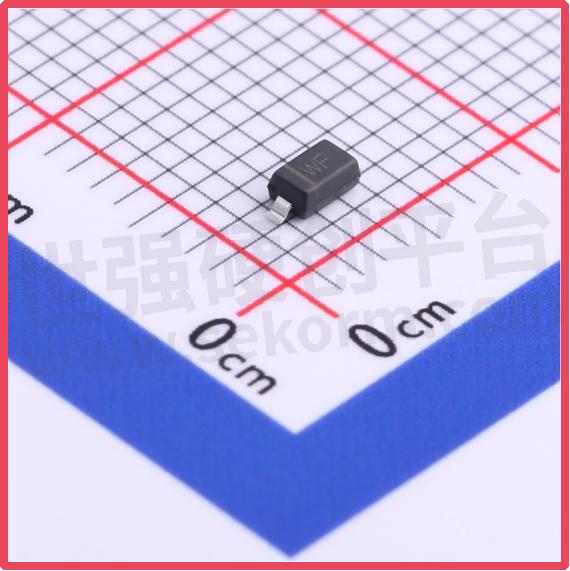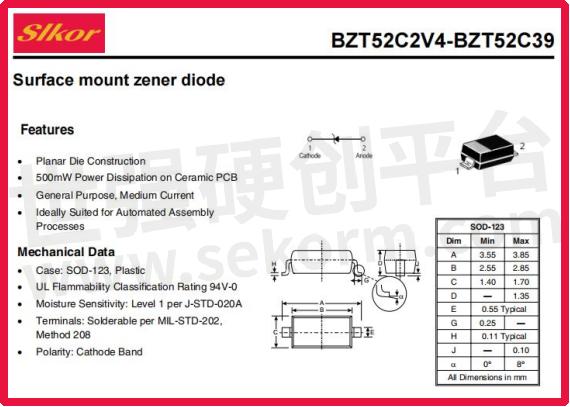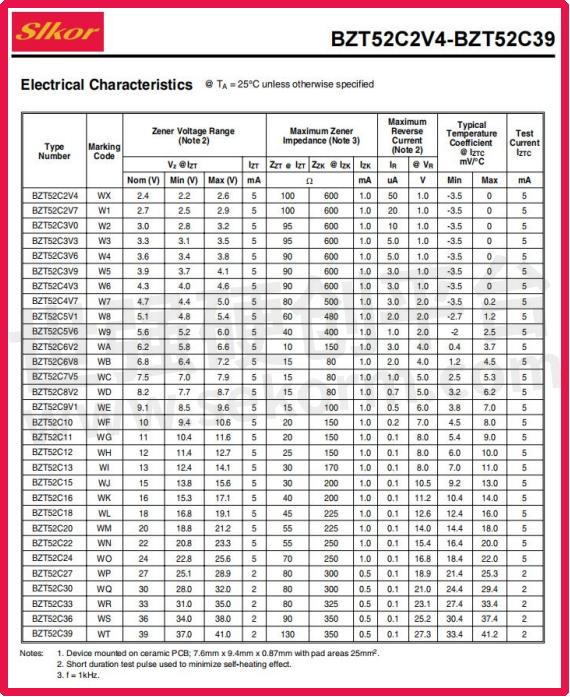The Voltage Regulator Diode BZT52C10 Features A Maximum Power Dissipation of 500mW and A Stable Voltage Value of 10V

The SLKOR Voltage Regulator Diode BZT52C10 features a maximum power dissipation of 500mW and a stable voltage value of 10V. The device operates within a voltage stability range of 9.4V to 10.6V, with a reverse leakage current of 200nA. This voltage regulator diode boasts high stability, reliability, low power consumption, and ease of integration, making it instrumental in safeguarding sensitive circuits from damage due to abnormal conditions like high voltage and overcurrent in electronic isolators.

Slkor Voltage Regulator Diode BZT52C10 product photo

Slkor Voltage Regulator Diode BZT52C13 specification
The Slkor Voltage Regulator Diode BZT52C10 adopts a flat mold structure, which facilitates high-precision manufacturing and consistency. This structure also allows for greater flexibility in layout and wiring on printed circuit boards (PCBs), aiding in reducing the boards footprint and increasing integration. With its strong versatility, the BZT52C10 is suitable for various circuit applications. Whether in digital or analog circuits, it can provide stable voltage output. Its moderate current range meets the needs of most circuits without generating excessive heat due to high currents. Standardized dimensions and interface design make it highly suitable for automated assembly processes, reducing the potential for human error and enhancing product quality and reliability.

Parameters of Slkor Voltage Regulator Diode BZT52C13
The Slkor Voltage Regulator Diode BZT52C10 finds several applications in electronic isolators. Firstly, it stabilizes the power source. In the power supply section of electronic isolators, this component is often utilized as a voltage stabilizer. By adjusting its parameters, it ensures the internal circuits of the isolator remain stable even during fluctuations in the power supply voltage. Additionally, it serves for signal isolation and protection. During signal transmission, it can achieve electrical isolation of signals, limiting abnormal voltages within a safe range, thus safeguarding subsequent circuits from damage. Lastly, it contributes to noise suppression. Within the isolator, this diode can function as a low-pass filter, eliminating high-frequency noise signals and enhancing the purity of signal transmission.
- +1 Like
- Add to Favorites
Recommend
- Slkor BZT52C5V6S: Precision Zener Diode for Voltage Regulation with A VZTyp rating of 5.6V and A Maximum Power Dissipation of 200mW
- The Voltage Regulator Diode BZT52C36 Features A Maximum Power Dissipation of 500mW and A Stable Voltage Value of 36V
- The Voltage Regulator Diode BZT52C30 Features A Maximum Power Dissipation of 500mW and A Stable Voltage Value of 3.6V
- The Voltage Regulator Diode BZT52C2V4 Features A Maximum Power Dissipation of 500mW and A Stable Voltage Value of 2.4V
- The Voltage Regulator Diode BZT52C11 Features A Maximum Power Dissipation of 500mW and A Stable Voltage Value of 11V
- The Voltage Regulator Diode BZT52C3V6 Features A Maximum Power Dissipation of 500mW and A Stable Voltage Value of 3.6V
- The Voltage Regulator Diode BZT52C20 Features A Maximum Power Dissipation of 500mW and A Stable Voltage Value of 20V
- The Voltage Regulator Diode BZT52C15 with A Maximum Power Dissipation of 500mW and A Stable Voltage Value of 15V
This document is provided by Sekorm Platform for VIP exclusive service. The copyright is owned by Sekorm. Without authorization, any medias, websites or individual are not allowed to reprint. When authorizing the reprint, the link of www.sekorm.com must be indicated.





























































































































































































































































































































































































































































































































































































































































































































































































































































































